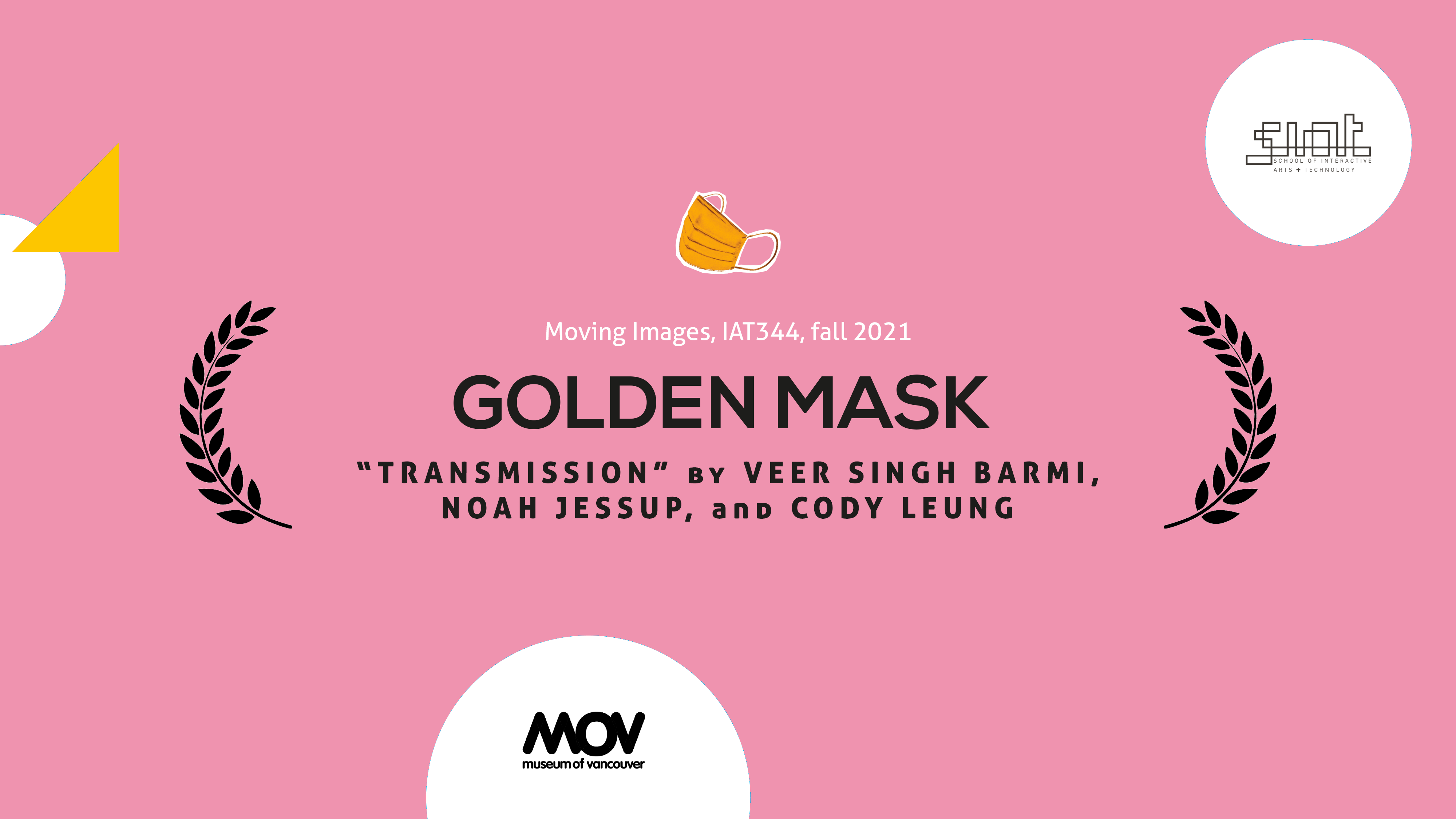Tools Used
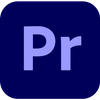
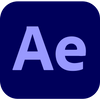
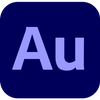
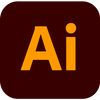

This was a group project that was completed for IAT 344, Moving Images. The purpose of this project was to create a documentary for the Museum of Vancouver's exhibition that focused on how people coped with the Covid-19 pandemic. For this project, my group decided to focus on the BC Honda Owners Club, and how they were able to interact with each other over their shared passion even while they were far apart.





Initially, my group was not sure as to what we would focus our documentary on. We explored various options until one of our members mentioned that they had a unique group to focus on which would set us apart from the rest of the class's projects. This led us to begin planning on creating a documentary centred around the BC Honda Owners Club.
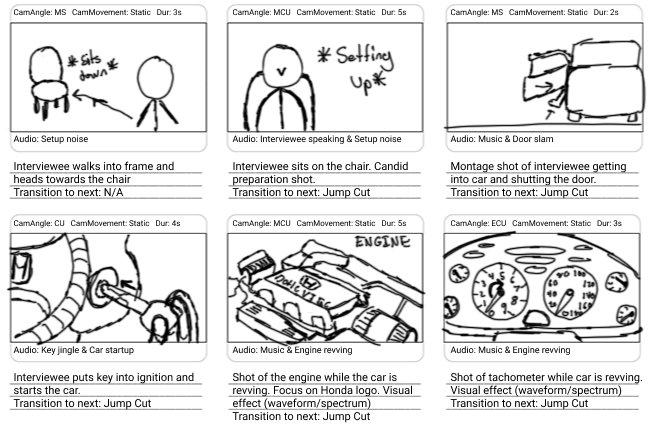
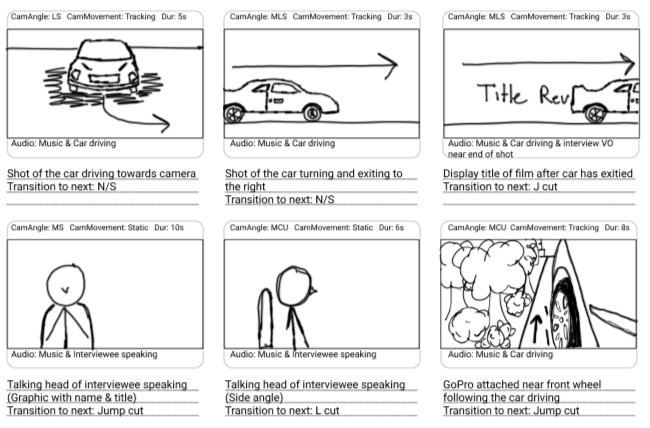
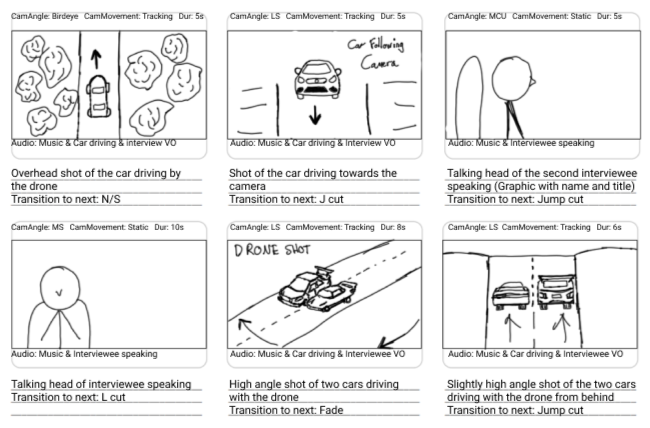
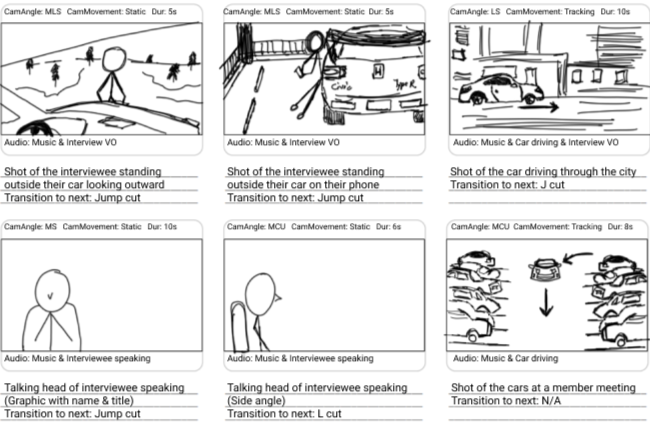
When we were making the storyboard, we were able to pin down exactly what we wanted for the opening sequence as well as the interview shots. However, when it came to storyboard the b-roll, we were not sure what kind of shots we wanted. Since we weren't sure what to film for the b-roll, we decided to let the results of the interviews dictate what kind of shots we wanted to get for the b-roll footage. This allowed us to shape the b-roll footage around the interview and match the dialogue and themes of the interviews with the b-roll footage.
Additionally, we also created a mood board which helped us plan for the potential visuals we wanted to capture for the documentary as a whole. This was especially helpful as it solidified how we wanted the interview to look.
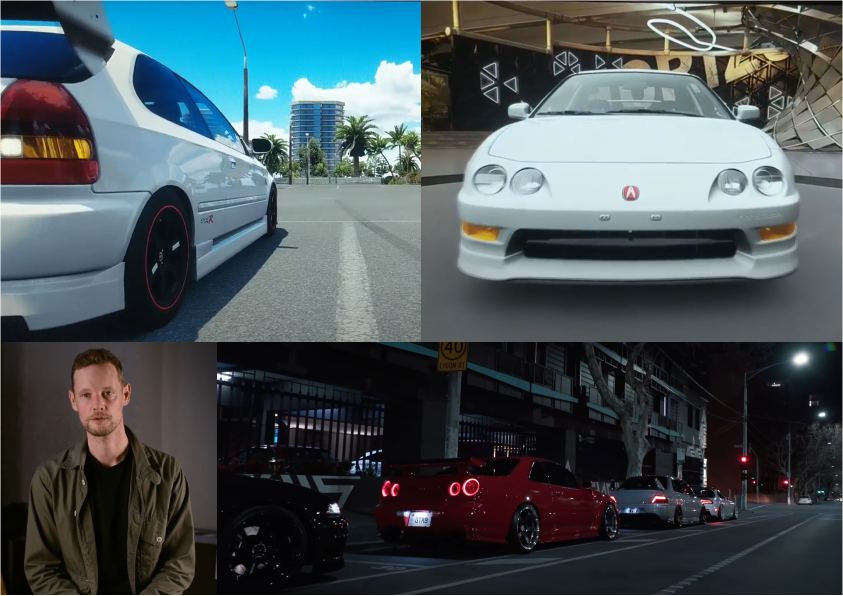
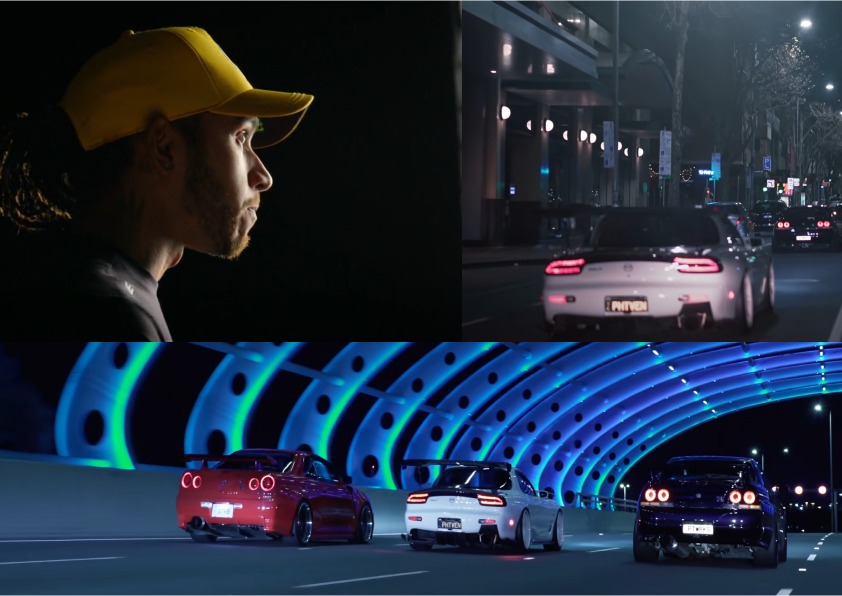
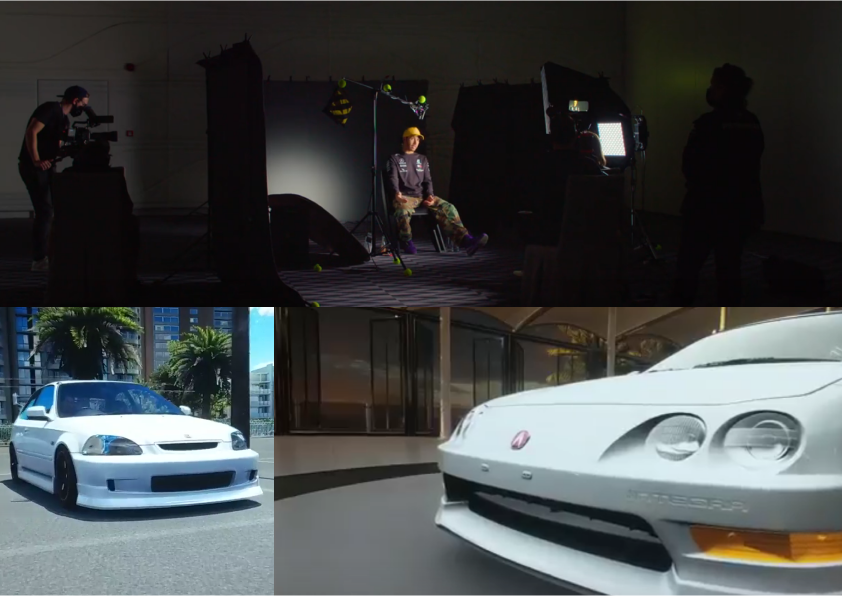
Our mood board was inspired by many different documentaries that we had watched for inspiration. Creating the mood board was essential as it helped guide us on how we wanted the visual aspect of the documentary to be represented.
The filming process for this documentary hit many speed bumps due to severe weather over the course of our month of production. Due to the weather, we weren't able to achieve all of the b-roll footage that we had planned. However, we continued to work hard through these issues and were still able to get enough b-roll footage for the documentary.
The first half of production was spent filming the interviews since we had previously decided to conduct the interviews so that we could use them to dictate the types of b-roll footage we wanted to shoot. Before we started our interviews, we went to the location we planned to film the interviews to practice how we wanted it to look as well as where we wanted to place the lights and cameras. We ended up using three lights and three cameras. We used the key, back, and fill light set up for our interviews while we had a front, side, and slider camera all focused on the interviewee.
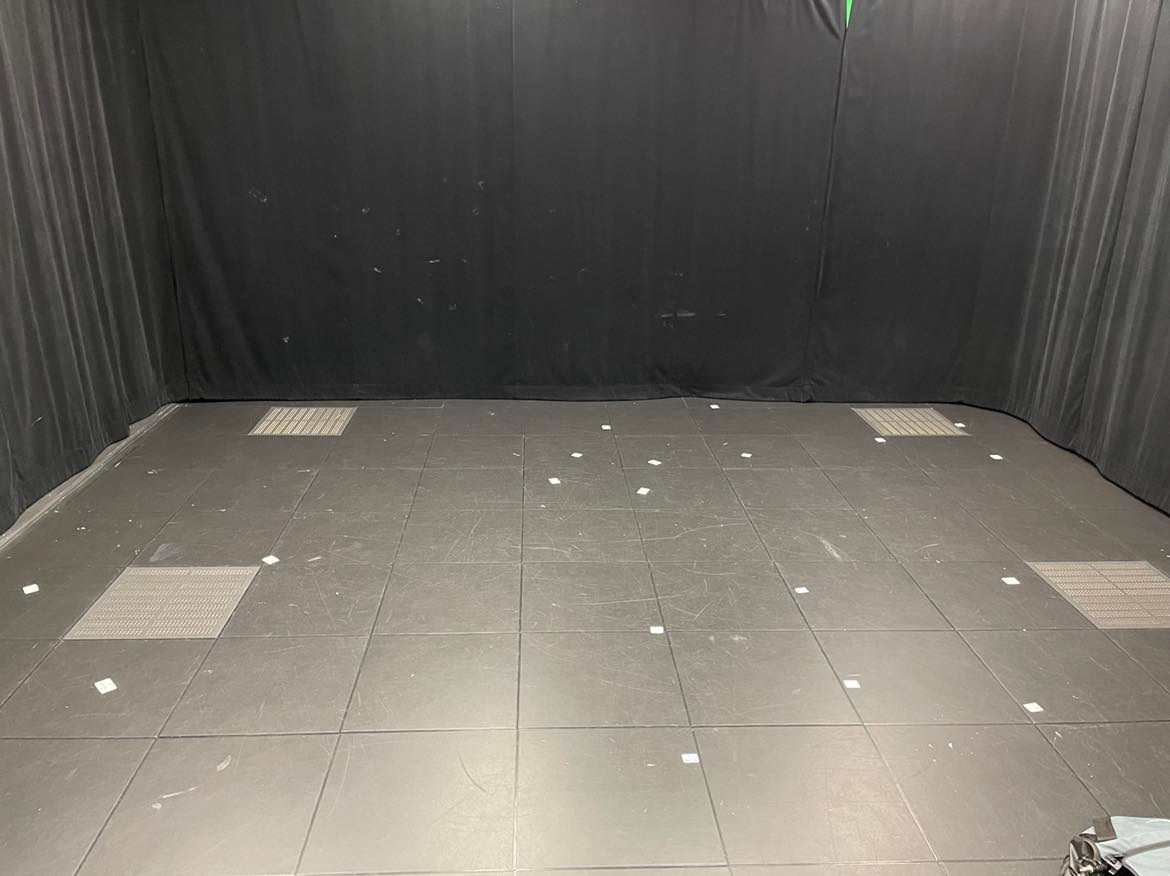
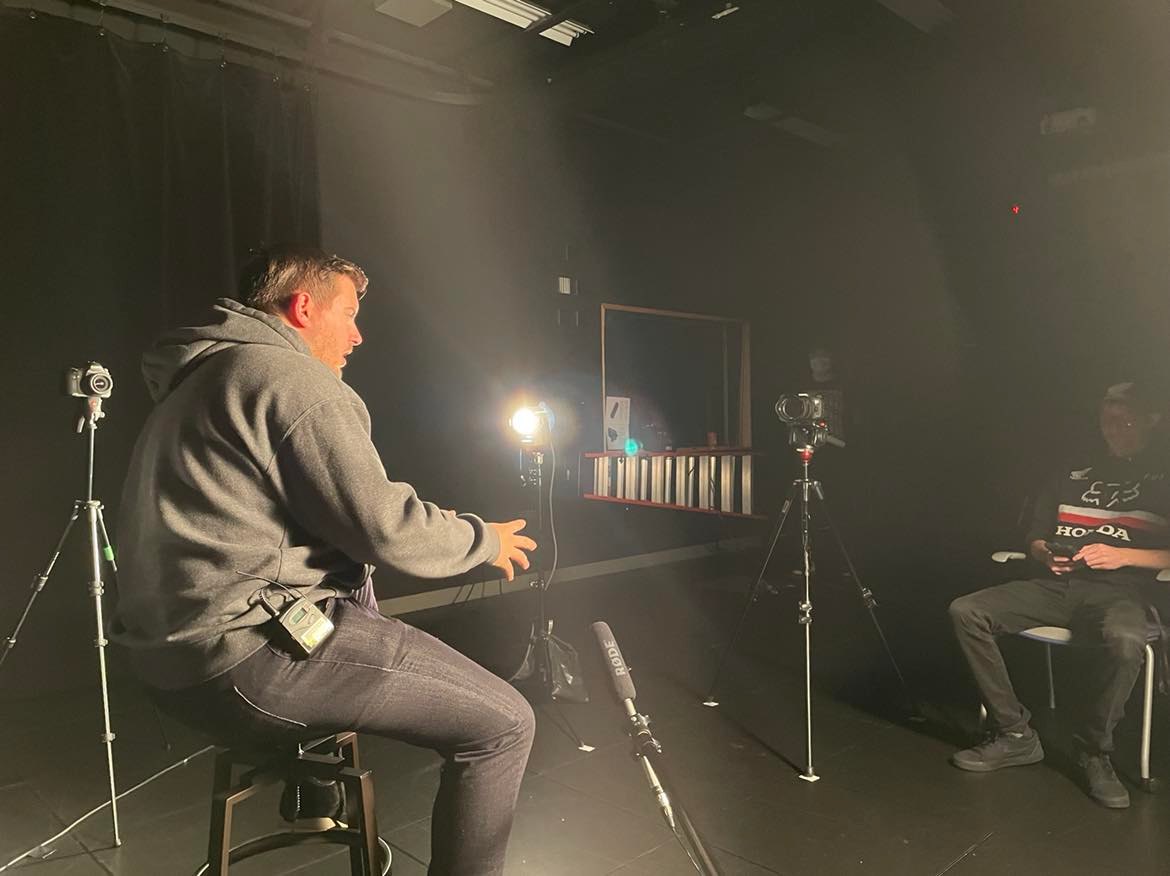
After setting up and figuring out where we want the lighting and camera equipment to go, we decided to put gaffer tape on the ground so that we would know where to put each piece of equipment on the day of the interview. Having put gaffer tape on the ground was really helpful as we were able to go in the next day and set up the equipment before the interview started without having any delays. This also helped us in knowing the specific framing that we needed so that our entire group wouldn't be in the shot when we started rolling.
The second half of production was then spent on filming b-roll footage for the documentary. We left the filming of b-roll footage to the second half of production since we had previously decided that we wanted the interview to guide the narrative of the documentary, which in turn would dictate the type of footage we would shoot.
Due to severe weather, we did not have as much time as we would have liked so we had to get every shot done within 1-2 takes. We essentially shot the entire footage over the course of one day and a half which explains why the majority of the b-roll footage is from the same location as well as the same time of day. If we had more time, we would have filmed some b-roll at night so that we could have captured the bright lights that the cars emit.
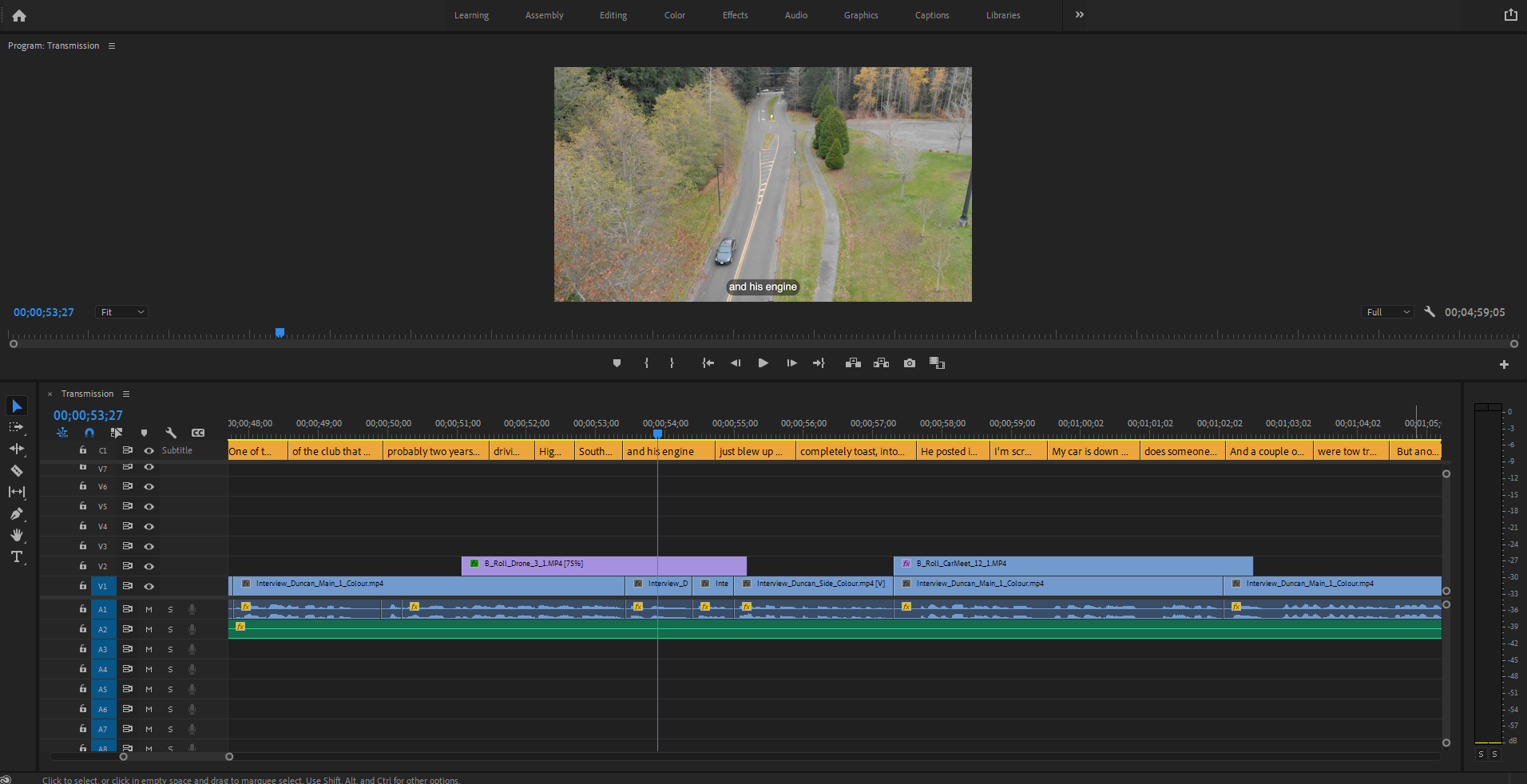
Due to the pandemic, we had to conduct our post-production stage from home. This led to numerous different iterations of the edit since I had to continuously export and upload the documentary to youtube in order for my teammates to view it and give suggestions in order to make the documentary better. In total, we went through 16 different iterations of the documentary where each version was substantially different due to re-edits and adjustments of the visual effects and graphics. Our very first iteration of the documentary was when we submitted our rough cut for the course. This version did not contain any b-roll that would make it to the finished version of the documentary since the b-roll I used for this edit was that which we shot weeks prior for practice so that we knew how we were going to capture the footage for the b-roll.
After getting feedback from the teaching team and our peers, we realized that we had a lot of work to do in order to get it to the level that we envisioned when we set out to make the documentary. We reviewed the feedback and took a lot of the suggestions we got and implemented them in our own way. For example, one of the comments we got was that the beginning half of the interview was not strong enough and didn't add anything to the theme of the project. We took this into account and I ended up having to scrap the entire opening interview and replace it with a far stronger section of the interview. Another comment we got was that I had used the side angle footage too much where it ended up becoming distracting. This is how I learned that I should only use the side angle profile for important, high impact segments of the interview to help drive the point that the interviewee was making. Of course, we also got a lot of comments that mentioned that there was a Volkswagen present in the b-roll of a Honda documentary, which was to be expected since the b-roll footage we used was all practice footage of our own cars.
For this project, we were required to include at least one visual effect of our choosing in the documentary. Since our documentary was dealing with cars, I decided to create a rather simple visual effect: the audio waveform/spectrum. I used this visual effect to illustrate the sound and power an engine has. I also took this visual effect and used it to help transition the topic of the pandemic of the club having to deal with increased restrictions to the club opening up their activities again.
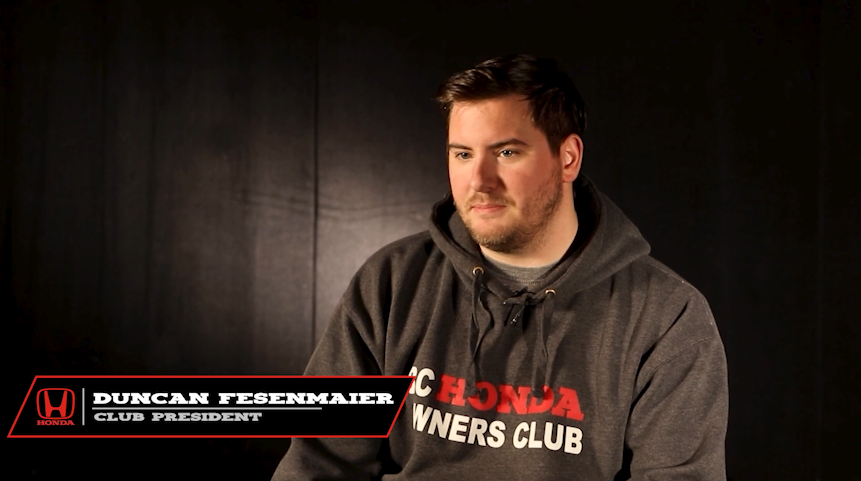
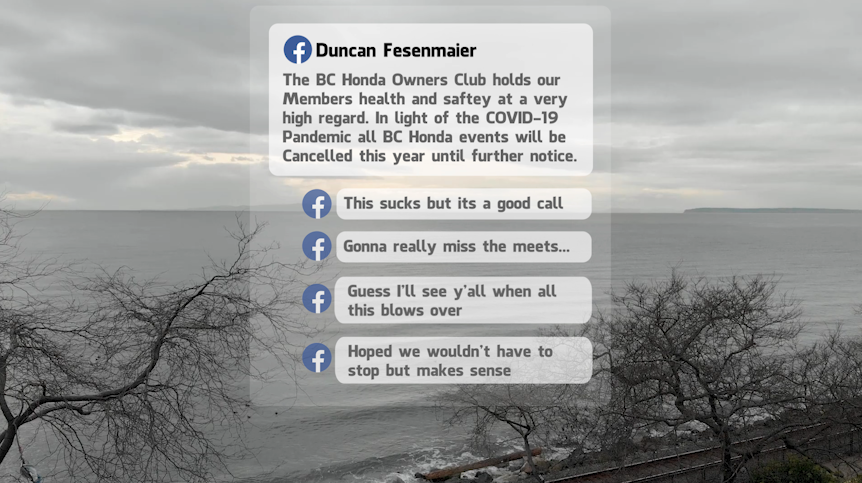
For the graphics, I decided to make a nameplate for each person we interviewed. I decided to go with the skewed rectangle design for this nameplate as I felt that it would go well with the cars in the b-roll since this design gives off a feeling of speed. For the contents within this design, I included a Honda logo as well as their name and position within the club.
I also decided to add a graphic to illustrate the Facebook comments that were posted when the club announced that they would have to shut down the club meets and activities due to the pandemic. I decided to place this graphic over a slow-motion shot of the water since the ocean can be used to represent multiple feelings, such as despair, loneliness, and sadness with certain lighting.
I felt that this effect would be useful since it provided a break from hearing the interview and added the sound of a car engine, which can be connected to travelling since we all use vehicles to get from A to B.
The experience that I gained with creating this documentary will help shape how I plan and create future films. Having severe weather occur at the time of production of this documentary taught me that you can never expect everything to go your way. Having to rush through our second half of production also taught me to allow yourself more time than you think you will need to film your footage since you never know how many takes a scene will take or how many new ideas you may come up with amidst filming.
Having completed this documentary amidst a global pandemic and severe weather has taught me that I am able to rise to the occasion and get the job done when required. This project has also taught me many new skills when it comes to editing and visual effects as I feel far more confident in my abilities now than I did before creating this documentary. This project has also further cemented my passion for filmmaking, especially editing as I enjoyed every second of this project and can't wait to get started on the next one.
